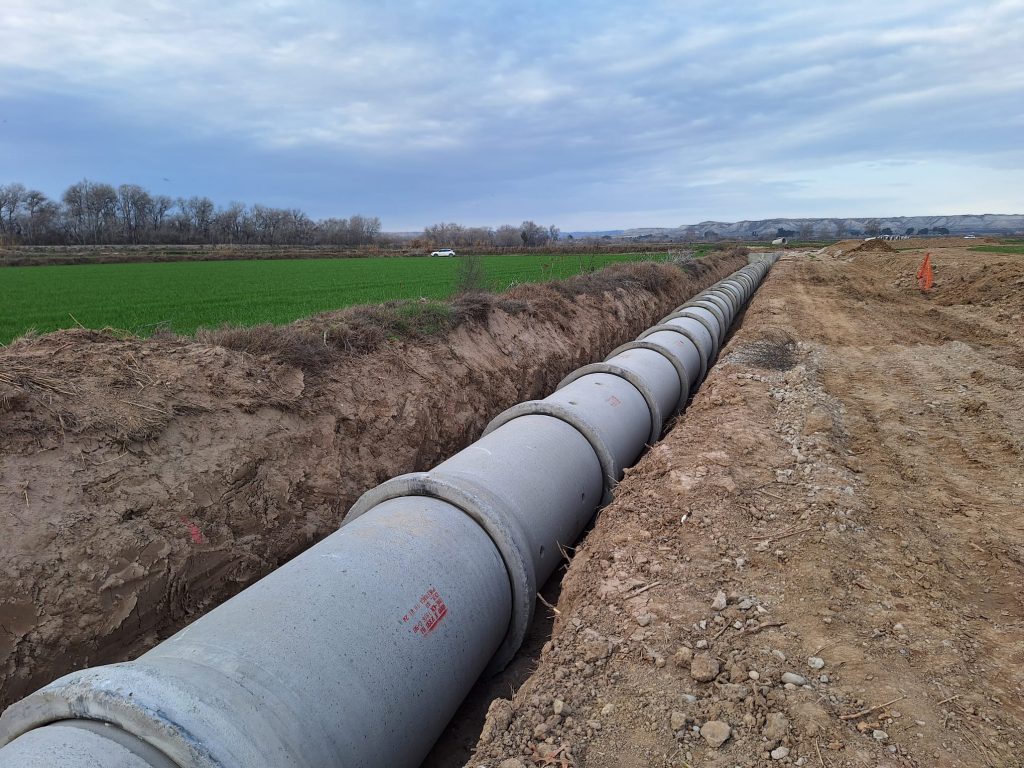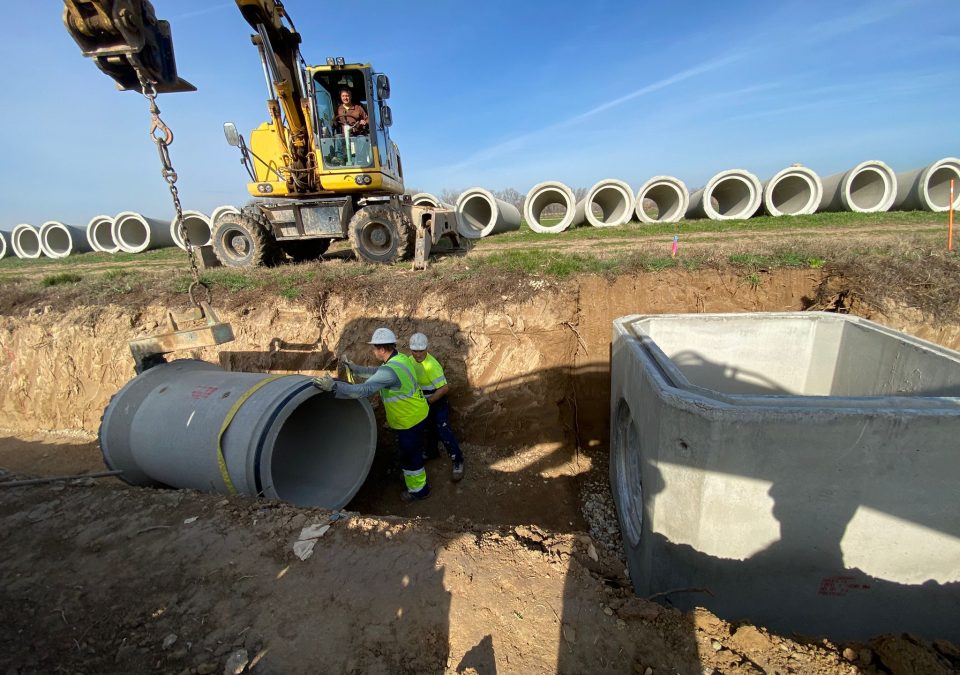The laying of the new concrete pipe, with a total length of 2,300 meters in this phase, which moves this infrastructure away from the riverbed, is in progress.
These works in the Comunidad de Regantes de la Huerta del Ebro, in Fuentes de Ebro, Zaragoza, are the first of the proposed adaptation of the Osera de Ebro – Fuentes de Ebro section of the LIFE Ebro Resilience P1 project, the Osera de Ebro – Fuentes de Ebro section.
This first action is being carried out by the Department of Agriculture, Livestock and Food of the Government of Aragon through the public company TRAGSA, with a budget of 1,156,749.93 euros.
The objective is to move the existing irrigation network away from the defense dike. In its current position, there were affectations and cuts in the supply when there were breaks in the mote.
In addition, it will be converted from an existing infrastructure built by means of an open-cut trench in the ground, to a concrete pipe buried in its main network of 2,300 meters.
Thus, together with a greater adaptation to the flooding of the Ebro River, by preventing the irrigation ditch from being an obstacle to water flow, it also increases the efficiency of the irrigation system, reducing losses and maintenance work.

Remaining Zone 2 shares
In addition to the work already started, further interventions are planned to reduce the damage due to flooding. In the first phase, the narrowing will be reduced and river space will be recovered by recessing two sections of the defense dike, moving them away from the channel in the meander of Aguilar and the mejana del Conde. This project has already passed the public information phase and will be executed by another of the partners, the Ebro Hydrographic Confederation (CHE) with a budget of 2.9 million euros.
The expansion of the river area will be completed with the environmental restoration of the land recovered for the riverbed, through the planting of riparian vegetation, which will be carried out by the Government of Aragon.
In the second phase, currently at an advanced drafting stage, one of the most innovative interventions of the LIFE proposal is proposed: the creation of so-called buffer zones for lateral flows.
These buffer zones will compartmentalize farms in areas that will be pre-flooded in a controlled manner during flood episodes, generating water buffers that will minimize damage to farms and infrastructure when there is a generalized overflow. Here we have taken into account the processes already underway to modernize irrigation of the entire orchard, by the Irrigation Community of the Huerta del Ebro, and the action that goes with it of land consolidation, by the Government of Aragon.

